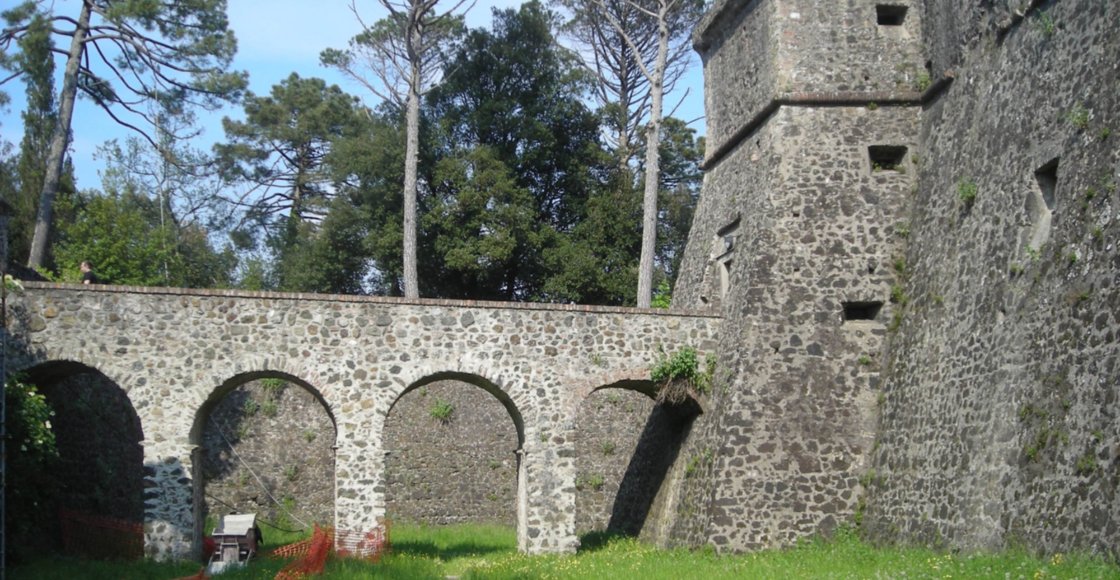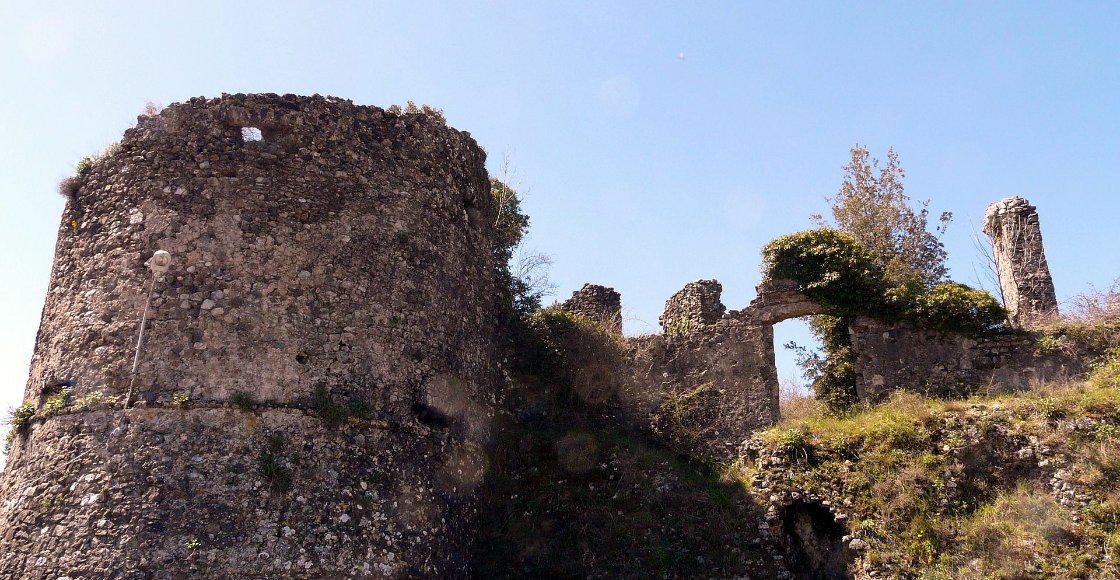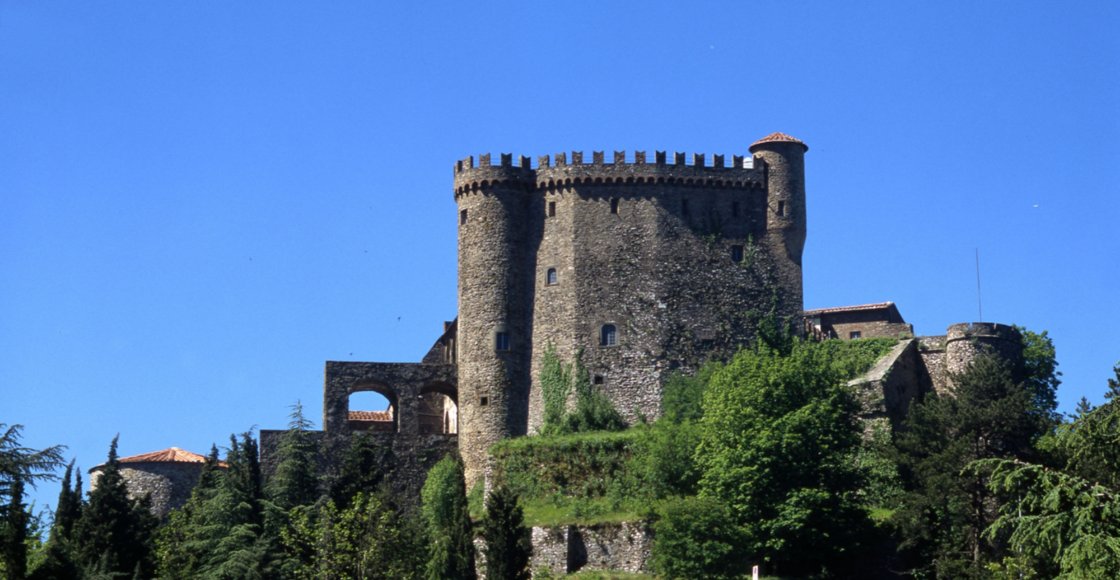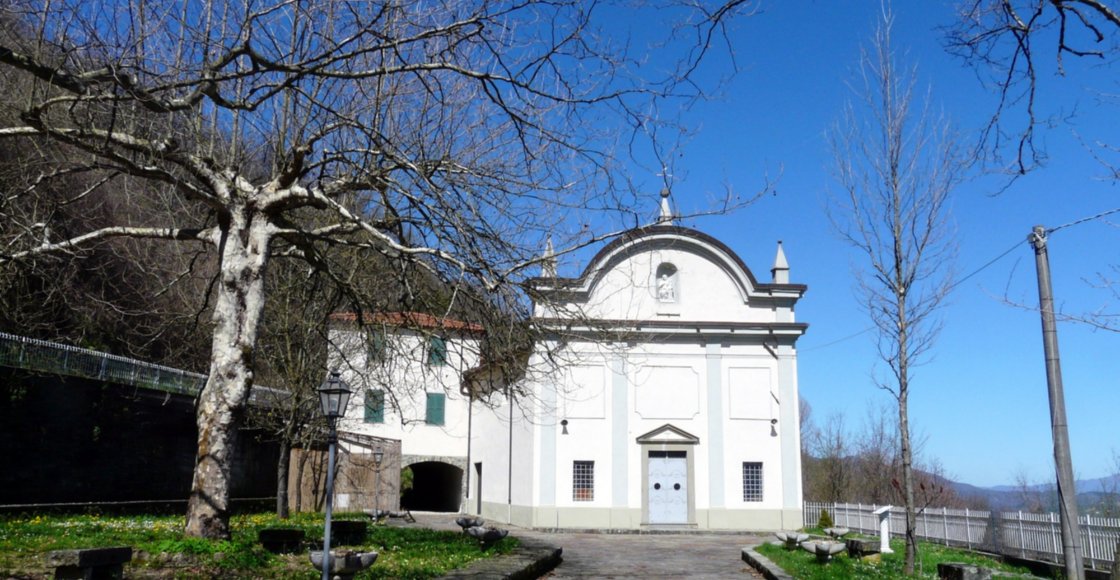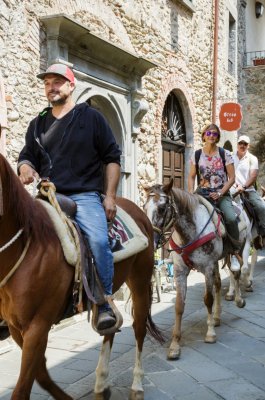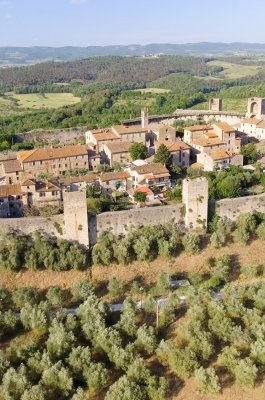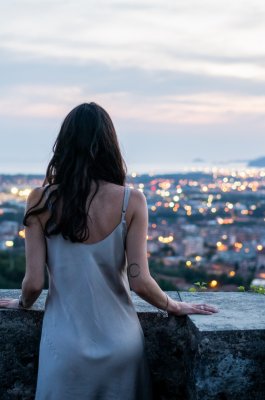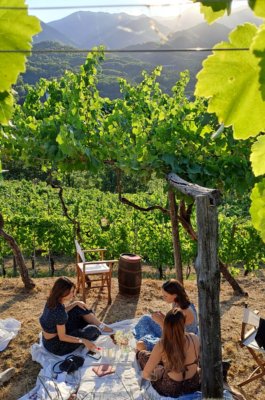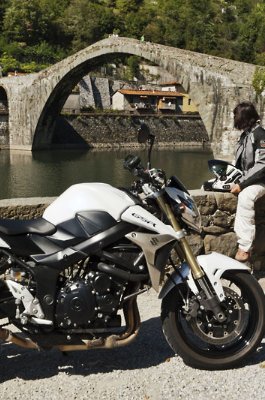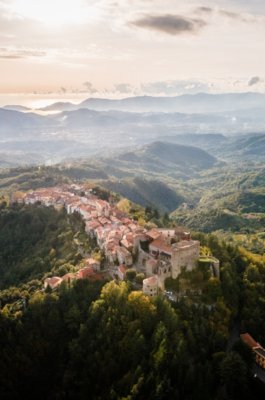The route does not immediately leave the town of Aulla, located on a narrow strip of land at the confluence of the Magra and Aulella rivers. A short distance from the starting point, the majestic Brunella Fortress catches the eye with its imposing walls and sturdy ramparts, evidence of the city’s strategic role along the Via Francigena.
Once past this fortress, the route again enters the woods, following trails that alternate between challenging stretches and beautiful viewpoints. Among hills and glades, the path offers glimpses of the Apuan Alps. Along the way, the villages of Bibola, Vecchietto and Ponzano Superiore are encountered. Not far from the track, Caprigliola peeps out with its cylindrical tower, once part of the residence of the bishops of Luni.
Moving on, the natural landscape is enriched with historical evocations: the Malaspina Castle in Fosdinovo stands in the distance protecting its village, while only ruins remain of the Brina Castle, now shrouded in vegetation. In these places, where stone is intertwined with green woods, the Tuscan stretch of the Via Francigena offers the first thrilling views of the Tyrrhenian Sea. Finally, the path leads to Sarzana in Liguria, where the landscape becomes gentler but the atmosphere more vivacious.















